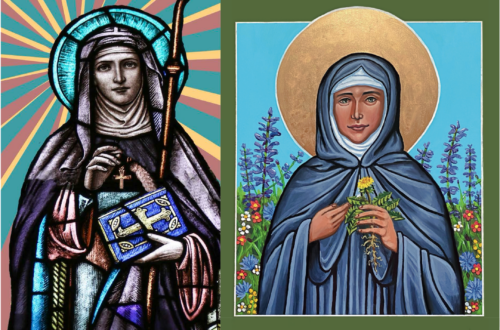Women and Autonomy
What makes us modern human beings is that we understand ourselves to be morally autonomous persons. Since the 18th century in the West, human and civil rights have been predicated on this basic assumption about ourselves. As an autonomous person, I get to choose my own moral goods as long as I do not deprive others of their moral autonomy. For two centuries the Catholic hierarchy fought vigorously against this view, condemning many modern claims to rights, including and especially the freedom to choose one’s own religion.
Then in the 1960s it did an about-face and embraced modernity’s commitments to freedom and rights. Although this conversion to modernity may have been heartfelt by Pope John XXIII and Fr. John Courtney Murray, in the period of conservative restoration under Popes John Paul II and Benedict XVI, religious freedom became an argument to defend the church’s status quo. The Catholic hierarchy took the moral autonomy of persons and reapplied it to the Catholic church as an institution. The church, it was now alleged, is the victim of having its rights violated and its moral autonomy denied. Who is trampling on religious freedom and the moral autonomy of Catholic institutions? Women who demand reproductive rights and those who defend them!
A recent example of this has been the legal attempts by Catholic organizations in the United States to prevent access to contraception for their employees under the Affordable Care Act. Under the act, they were already exempt from having to provide contraception under their health plans. They merely had to notify the government or their insurer of their religious objection, and they would have no further involvement in providing contraception through their health plans. However, these Catholic organizations found it unacceptable that their notification would then trigger contraception being offered to their employees through alternative arrangements. They argued that any action on their part that might— even indirectly and removed from their control—allow their employees access to contraception was an assault on their freedom of religion. While asserting their own institutional “moral autonomy,” they were unwilling to accept the personal moral autonomy of their (women) employees to make a choice about contraception.
Perhaps more startling than the Catholic organizations’ demands that their moral autonomy trumps that of the women they employed was the willingness of the Supreme Court to try and broker a further compromise between the religious nonprofits and the government. The Supreme Court agreed to review 30 cases of religious opposition to the notification rule (by the Little Sisters of the Poor and 29 other largely, but not entirely, Catholic non-profits). In May 2016, the court sent the cases back to the lower courts with the suggestion that religious nonprofits would be able to choose a plan without contraception coverage with no need to notify their insurer of their religious objection. The insurer would notice the absence and provide the coverage. But, in the end, even this further compromise does not seem to have satisfied the religious nonprofits. In the name of protecting their own consciences, they want to make their employees’ conscientious choice of contraception coverage as burdensome as possible by forcing them to acquire it through an entirely separate enrollment in a health plan.
Perhaps more startling than the Catholic organizations’ demands that their moral autonomy trumps that of the women they employed was the willingness of the Supreme Court to try and broker a further compromise between the religious nonprofits and the government.
The Supreme Court’s intervention highlights a broader issue of ascribing personal attributes like conscience and autonomy not only to individual human beings but to corporate entities as well. This is, however, a more acute problem where women are concerned, because historically it has been a long battle for women to gain recognition as autonomous persons. Modernity began in a thoroughly patriarchal Western society that initially excluded women from the category of morally autonomous persons. Certainly liberal thinkers, like Mary Wollstonecraft and John Stuart Mill, championed women’s legal and moral equality. But into the 20th century they were outnumbered by the advocates of women’s moral complementarity. This latter view argued that women’s role as mothers and their sexuality defined them morally as different from men and qualified their autonomy. This view of women as “separate but equal”—as well as not fully autonomous—was a part of modernity that the Catholic church more readily adopted.
By the time the Catholic hierarchy embraced moral autonomy in the era of Vatican II, women were winning the battle for moral, social and legal equality, and the church formally accepted their moral autonomy as human persons. Yet, even in Pope John XXIII’s 1963 encyclical, Pacem in Terris, we find an ambivalence. The pope declares, “Human beings have the right to choose freely the state of life which they prefer, and therefore the right to set up a family, with equal rights and duties for man and woman.” Only a little later he qualifies, “Women have the right to working conditions in accordance with their requirements and their duties as wives and mothers.” Husbands and fathers seemingly have no equivalent constraints on their work. In both the Catholic church and in the broader society, the slow and reluctant concession of women’s full autonomy has left women especially vulnerable to claims that their rights as autonomous persons are limited by their reproductive bodies and subject to the demands of the supposed conscience and autonomy of corporate nonpersons.
Reproductive rights are essential to women’s autonomy. Autonomy always has to be embodied, something that the modern world has understood well—except in the case of women’s bodies. Moral and bodily integrity go together. So habeas corpus and religious toleration went hand in hand in the 17th century and slavery came to be seen as simultaneously physical and moral cruelty. However, earlier modern definitions of women’s personhood that denied their autonomy and could only view their sexuality positively on the basis of their destiny to be mothers continue to allow women’s reproductive rights to be challenged even today. Yes, women have won the long struggle to exercise a full and equal autonomy on a par with men, but there is still a residue of cultural resistance to women’s autonomy that the Catholic hierarchy and other religious conservatives can tap into whenever women’s reproductive rights enter the public discussion.




